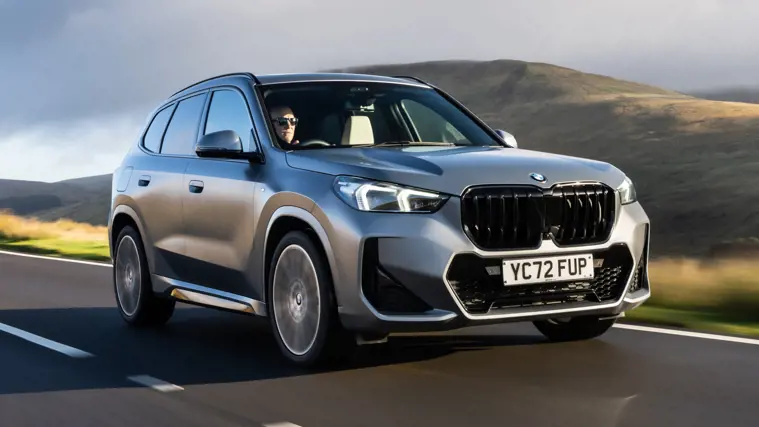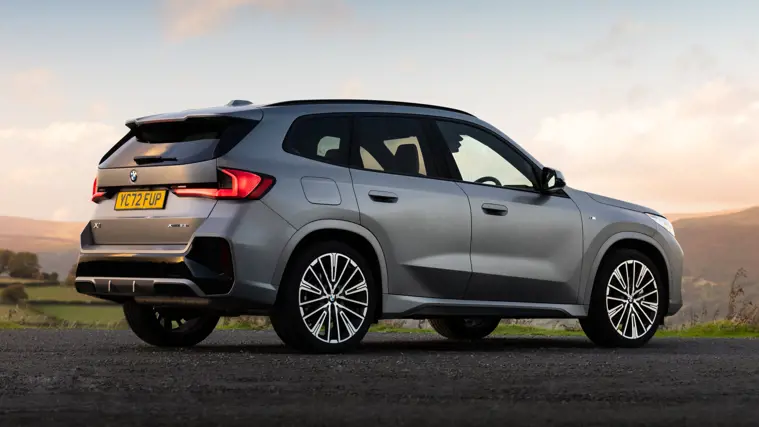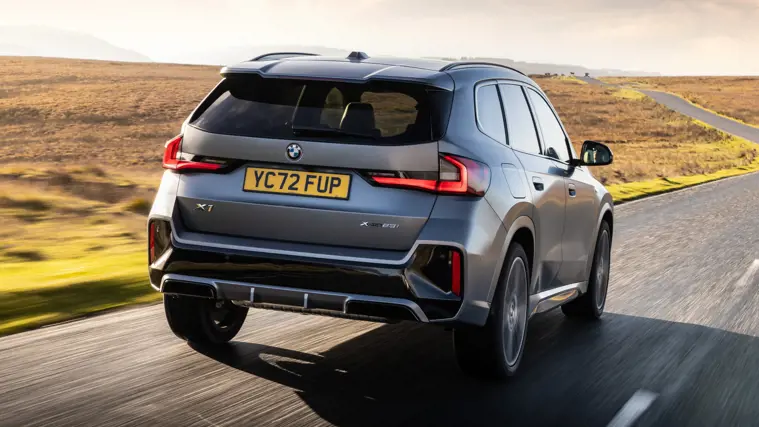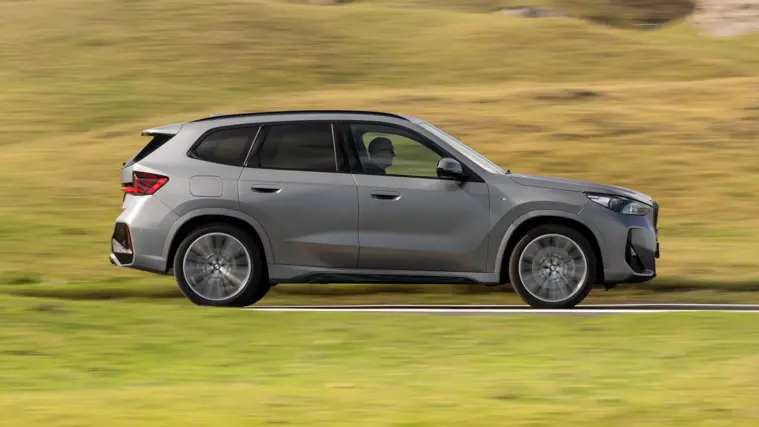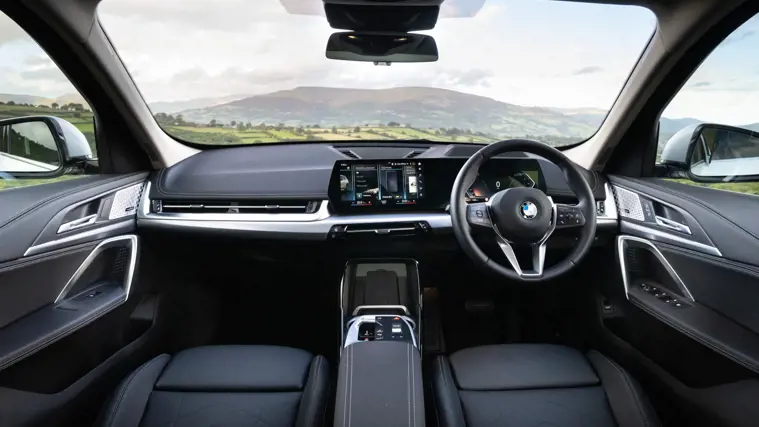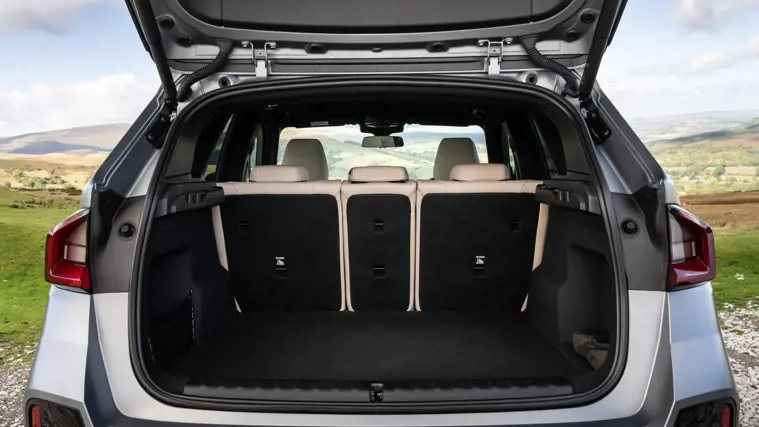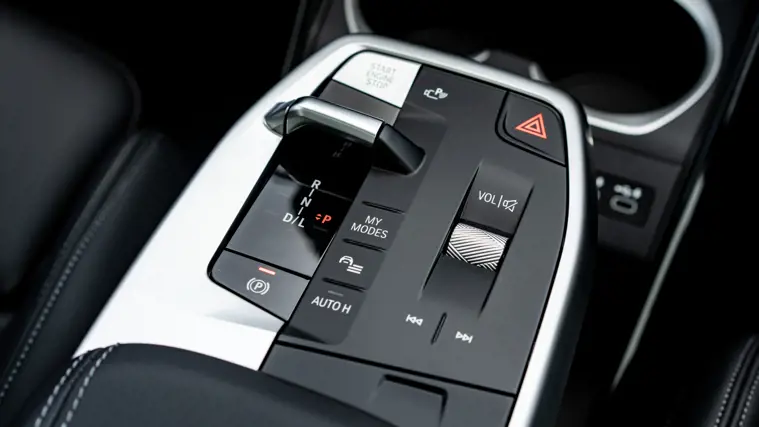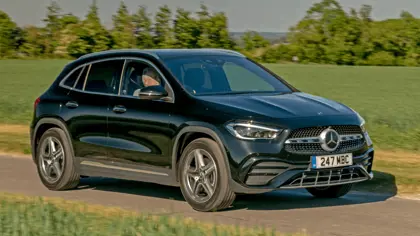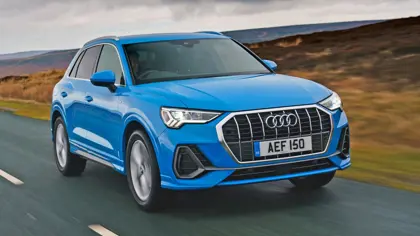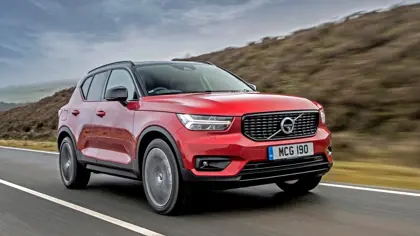BMW X1 Review
As a spacious small family SUV that’s good to drive and wears a desirable badge, the BMW X1 appeals on many levels
Strengths & weaknesses
- Even basic trims are well equipped
- Plenty of room inside
- Enjoyable to drive
- Rivals are more stylish, inside and out
- Can be pricey to buy
- Ride can feel a bit firm on some models
Small family SUVs are an incredibly popular type of car in the 2020s. And for good reason; they combine compact family car dimensions (being around the same size as a Ford Focus or Volkswagen Golf) with the raised driving position and glamorous looks of luxurious larger SUVs. And while cars of this type might be more expensive to buy than a regular family hatchback, they offer much lower running costs than full-size SUVs.
The BMW X1 version shares common parts with Mini SUVs (as Mini is part of BMW), so its engine fits in crossways under the bonnet. This frees up a lot more interior space, and puts this version of the X1 on par with rivals from the likes of the Volvo XC40, Audi Q3 and Range Rover Evoque.
As is common with this sort of road-focused SUV (BMW doesn’t expect X1 drivers to do serious off-roading in this car), there is a choice between front-wheel-drive versions (labelled sDrive) and four-wheel-drive (labelled xDrive) on some models, though others are four-wheel-drive only. Gearboxes are either a six-speed manual, an eight-speed automatic or a six-speed automatic - depending upon the engine (though this was replaced with a seven-speed version in 2018).
In terms of engines, there are a variety of diesel and petrol motors available. The 18d diesel produces 150hp and can go from 0-62mph in just under 10 seconds while being able to return around 55mpg. The more powerful 190hp 20d manages the 0-62mph sprint in a much nippier 7.8 seconds with official fuel economy of 49.6mpg. There is also a speedy 25d model with 231hp, but this version is rare.
Petrol power comes in the form of the three-cylinder, 1.5-litre 136hp 18i, which offers the prospect of fuel economy of 45.6mpg and the four-cylinder, 2.0-litre 20i model with 192hp and official fuel economy of 43.5mpg.
There's also an xDrive25e plug-in hybrid model, which combines a 1.5-litre three-cylinder petrol engine with an electric motor for a total output of 220hp and a claimed range on electric power of 35 miles from a full charge.
In terms of space for passengers and luggage, the X1 is roomy, with plenty of space for people - even three-abreast in the rear seats is fairly comfortable - and a big 505-litre boot.
Everything feels very well put together and the controls are logically laid out, plus the seats offer plenty of support and a good range of adjustment. If you really like a lofty-feeling driving position, the Volvo XC40 or Range Rover Evoque will give you a better sense of that, while the X1 feels very much like a family hatchback from behind the wheel.
It certainly comes across as a high-quality product, and a significant step up from more mainstream family crossovers such as the Nissan Qashqai and Ford Kuga. You do pay more for the privilege when comparing new cars, however.
That being said, standard equipment levels are pretty generous, even in the entry-level SE cars. All cars come with dual-zone climate control, parking sensors front and rear, alloy wheels, cruise control and an electrically powered boot hatch. A digital radio, Bluetooth audio streaming and a centrally mounted media system operated by BMW’s intuitive and convenient 'iDrive' rotary controller. Later models received larger central touchscreens, so keep an eye out for these if you want the slickest media system possible.
As well as the equipment mentioned above, SE cars also get automatic lights and wipers, while moving up to Sport brings larger alloy wheels, sportier exterior styling and sports seats. Step up to xLine and you get leather seats - the front pair of which are also heated - and LED headlights, while the range-topping M Sport cars come with their own M-branded styling kit and alloy wheels, leather and Alcantara seats and a more sporty suspension setup.
That sporty suspension makes what is already a firm ride even stiffer, which gives the X1 quite a sporty feel, but can make it uncomfortable over bumpy surfaces compared with more comfort-oriented models. The optional adaptive suspension available on M Sport models helps, but the lower-spec cars are definitely the most comfortable standard X1 models.
Should I get a BMW X1?
✔ Even basic trims are well equipped
✔ Plenty of room inside
✔ Enjoyable to drive
✘ Rivals are more stylish, inside and out
✘ Can be pricey to buy
✘ Ride can feel a bit firm on some models
The original BMW X1 was one of the early small family SUVs, but this version faces a lot more competition. And the presence of so many talented rivals rather throws into sharp focus some of the limitations of the X1.
It’s good to drive, living up to BMW's reputation for making sporty cars, and it has plenty of space - even the hybrid version doesn’t lose too much boot space, instead sacrificing rear headroom as it places the battery packs under the rear seats. It’s also reasonably fuel-efficient, especially the 18d diesel model and the plug-in hybrid (provided you regularly charge the battery and mainly do short journeys).
However, the ride is rather firm, it’s quite pricey when new and the styling inside and out isn’t as elegant or as adventurous as you’ll find on the Volvo XC40 or Range Rover Evoque. Nevertheless, the X1 is a capable, practical and well-built small family SUV, it’s just not the most daring or the most comfortable.
- Trim levels
- Engine
- Plug-in hybrid
- Best BMW X1 for...
- Rivals
- Dimensions
- Boot space
- Reliability
- Warranty
- Should I buy used?
- Deals
Which BMW X1 to buy: trim levels
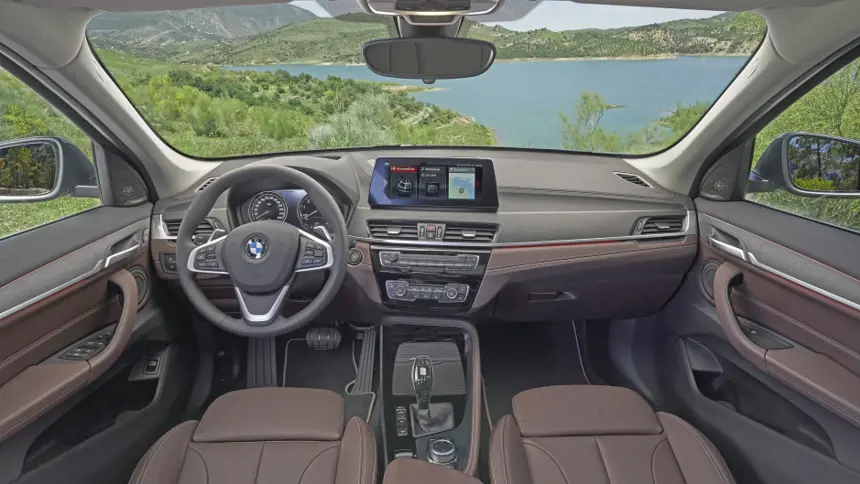
| Trim | Equipment | Deals |
| SE | Limited stock: With built-in sat-nav, cruise control, alloy wheels, parking sensors all round and an automatically operating boot hatch, the entry-level SE is very well equipped. | |
| Sport | Limited stock: Upgrade to a Sport-spec car and you get larger alloy wheels, sports seats, and more sporty-looking styling inside and out. | |
| xLine | From £14,995: xLine brings leather seats, heated front seats and LED headlights on top of all the equipment featured in SE and Sport models. | |
| M Sport | From £13,190: The M Sport trim tops the tree for the X1 and, over the Sport, it gets a still-more-sporty bodykit, Alcantara sports seats, a sprinkling of ‘M badges’ and unique ‘M’ alloy wheels. |
Best BMW X1 engine
It’s unlikely that you’ll be buying a car like this if sporty driving is at the top of your wish list. However, the X1 does drive well for this type of car. To which end, the most suitable of all the engine options for the X1 is really the 18d diesel. It’s not the most rapid of cars when you measure the sprint from 0-62mph, which takes 9.3 seconds with this engine, but the diesel engine offers enough muscle to make motorway driving a relaxed experience.
This relaxed power delivery combined with claimed fuel economy of just over 55mpg means that the 18d version of the X1 makes the most sense - the petrol models are good but don’t feel quite as muscular, while the 190hp 20d offers more power than you really need for this sort of car, unless you spend all your time with the car full of passengers and lots of weighty luggage.
Best BMW X1 plug-in hybrid
If you don’t want a diesel but are still concerned about fuel efficiency, then the plug-in hybrid version of the X1 will be the car to go for. With a 1.5-litre petrol engine boosted by an electric motor, it offers a total power output of 220hp.
This makes it the fastest X1 available, but also one that’s theoretically capable of 156.9 mpg fuel economy. That very much relies on you making the most of the car’s electric motor and batteries and regularly charging the car to maximise the amount of time you spend running on electric power and minimise how much petrol you burn.
Since the X1 plug-in hybrid provides up to 35 miles of electric range on a full charge, if most of your journeys are relatively short, it’s perfectly possible to get around barely using any petrol at all - provided you charge the car between journeys.
Best BMW X1 model for...
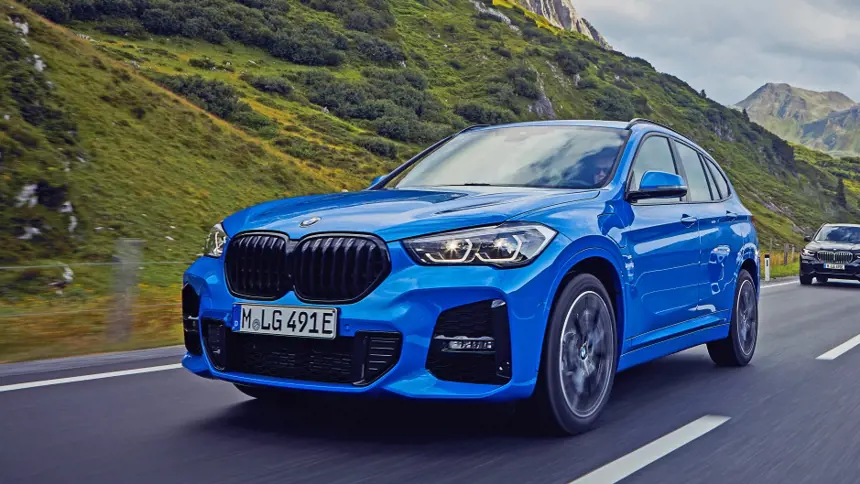
With a range of petrol and diesel engines, a plug-in hybrid petrol-electric option and a number of different trim levels, there should be an X1 available to suit most budgets and tastes.
| BMW X1 xDrive25e Sport: With around 35 miles of potential electric range, the plug-in hybrid X1 can be run very cheaply indeed if you can maximise its electric capability with regular charging and lots of short journeys. | ||
| BMW X1 xDrive18d Sport: Blending good on-road performance, the security of four-wheel-drive and 55mpg fuel economy, this is an excellent package for families. And the Sport trim is an effective balance of luxury and value for money. | ||
| BMW X1 xDrive 25e M Sport: There is no out-and-out performance version of the BMW X1, but the 220hp plug-in hybrid, with its electric assistance, accelerates pretty much as fast as a hot hatch such as the VW Golf GTI. | ||
| BMW X1 xDrive20i M Sport: The most powerful non-hybrid petrol-powered X1 is the least fuel-efficient X1, and not that fast. M Sport trim makes it an expensive choice, too. |
BMW X1 rivals
Even though the original BMW X1 was one of the first small family SUVs with a premium badge, it now faces a huge range of rivals. At the upper end of the spectrum in terms of price and badge kudos, you find the Mercedes GLA and Audi Q3, but neither feel as polished or as well made as the BMW.
More stylish - but perhaps not quite as upmarket in terms of the badge - is the Range Rover Evoque, which will undoubtedly be the best bet for you if you actually want to head off-road in a car of this size, or the attractively chunky and very capable Volvo XC40.
If you’re after value for money, the Ford Kuga and Nissan Qashqai are both very impressive and cost less to buy, though they feel less plush than the BMW, while the seven-year warranty available on the Kia Sportage could well turn your head its way - especially if you're considering a used model and would value having the greatest amount of manufacturer warranty possible.
BMW X1 practicality: dimensions and boot space
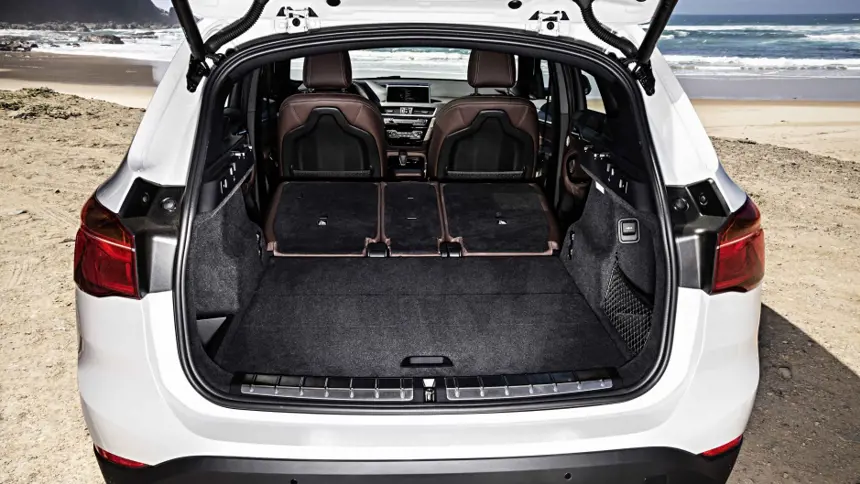
BMW X1 dimensions
At 4,447mm long, 1,821mm wide (or just over 2 metres if you count the door mirrors) and 1,612mm, the BMW X1 is very similarly sized to its rivals. Plus, although it’s taller than the average family hatchback, it’s broadly the same length and width, so if you’re used to driving something like a Ford Focus, the X1 won’t feel unduly bulky.
In keeping with the slightly sporty BMW badge, the X1 is a few centimetres lower than the Range Rover Evoque and Volvo XC40, but there’s not much in it, and certainly not enough to compromise the space inside - this is a roomy car for its size, even when you want to squeeze five people into it.
What’s more, with standard parking sensors all round, it’s easy to manoeuvre in tricky spaces such as busy car parks - especially when fitted with the optional reversing camera.
CLICK TO READ OUR FULL STORY ON BMW X1 DIMENSIONS
| Length 4,447mm | Width 1,821mm |
| Height 1,621mm | Weight 1,405kg - 1,745kg |
BMW X1 boot space
With your typical family hatchback delivering around 380 litres of boot space, the 505 litres of luggage capacity in the BMW X1 seems pretty strong. In fact, it makes it roomier - to the tune of five litres - than the more expensive BMW 3 Series Touring estate. Fold the rear seats down and you get 1,550 litres of space.
The one caveat to the otherwise impressive load space of the X1 is that the plug-in hybrid model does sacrifice some luggage capacity due to its battery pack - it can only offer 450 litres of boot space.
CLICK TO READ OUR FULL STORY ON BMW X1 BOOT SPACE
| Seats up 450-505 litres | Seats down 1,470-1,550 litres |
BMW X1 reliability
BMW’s recent reliability record has been a bit patchy, and the BMW X1 is no exception. In the 2019 Driver Power owner satisfaction survey it finished in an unimpressive 56th overall. In 2020 it came 58th overall and in the 2021 survey it finished in 74th place out of 75 models surveyed.
As a brand overall, BMW fared a little better, finishing 21st out of 29 brands featured in the 2021 Driver Power survey. All that being said, most of the mechanicals of the X1 are tried-and-tested parts, so they should provide reasonably reliable motoring, even if you might encounter some reliability or build quality niggles.
BMW X1 warranty
There is no mileage cap with BMW’s warranty - but it only lasts for three years. Mind you, the equivalent warranties from Audi and Mercedes are limited to 60,000 miles over their three-year span.
If you want a longer manufacturer warranty, then you’ll need to look at Renault or Hyundai’s five-year warranties, or the seven-year warranties offered by Kia and MG.
| 3 years | Unlimited miles |
AVERAGE REPAIR COST PAID BY WARRANTYWISE: £721
CLICK HERE FOR MORE INFORMATION ON USED CAR WARRANTIES
Used BMW X1: should I buy one?
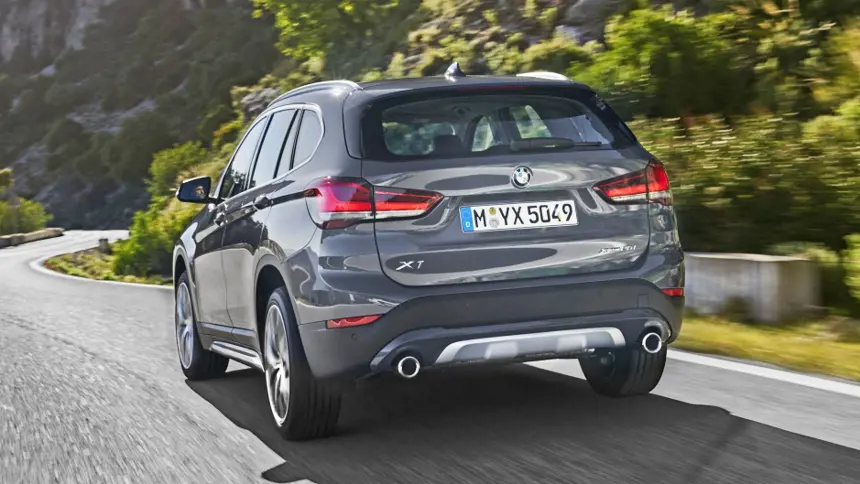
The popularity of the BMW badge - and that of the small SUV body style - is keeping used demand for BMW X1s quite high, so prices of second-hand models are relatively expensive. While it's not a cheap used car, though, the X1 is an appealing stylish and practical small family car that should suit many drivers.
However, because the model maintains its value quite well, monthly payments with PCP finance can be quite affordable - despite the high initial prices - as the car's predicted value at the end of the contract plays just as big a part in shaping the instalments as the initial price.
The most popular version of the X1 is the fuel-efficient diesel sDrive18d, the fuel economy for which is only bettered by the plug-in hybrid, though that is expensive to buy and was only introduced in 2019, meaning that the diesel model works better for a large proportion of drivers.
Best BMW X1 deals
If you’re after the best value for money, the X1 in SE spec with the 18i petrol engine or the 18d diesel is a good choice, since even this most basic X1 has plenty of standard equipment - including cruise control, parking sensors and built-in sat-nav - and choosing one in two-wheel-drive sDrive form will save you even more, since these are more fuel-efficient than 'xDrive' four-wheel-drive cars.
If you're after a little more power but can’t stretch to the expensive plug-in hybrid, then the xDrive20d diesel model in Sport trim offers a good balance between decent equipment levels and good value for money, plus slightly more punchy performance than you’ll find with the lower-powered models.
However, if you want the lowest-emission choice, then the plug-in hybrid, though expensive, is the best option. Be warned, though, if you have nowhere to charge it, or you frequently take on long motorway journeys, it won't be all that fuel-efficient. So, if you don't think you'll be able to charge much - or simply have the discipline to charge regularly - we'd stick to a diesel model, rather than lugging around expensive batteries and an electric motor that you're not getting the most from.
*Representative PCP finance - 2018 Ford Fiesta 1.0 ST-Line Hatchback:
| PCP representative example | APR rates available | |||||
| Cash price £12,000 | APR 7.90% | Value of loan | From | |||
| Fixed monthly payment £218.12 | Annual mileage of 8,000pa | £25,000+ | 6.9% | |||
| Total cost of credit £2,755.55 | Term 48 months | £12,000-£24,999 | 7.9% | |||
| Optional final payment £4,285.79 | Loan value £12,000 | £8,000-£11,999 | 8.9% | |||
| Total amount payable £14,755.55 | Deposit £0 | <8,000 | 9.9% |
BuyaCar is a credit broker, not a lender. Our rates start from 6.9% APR. The rate you are offered will depend on your individual circumstances.

